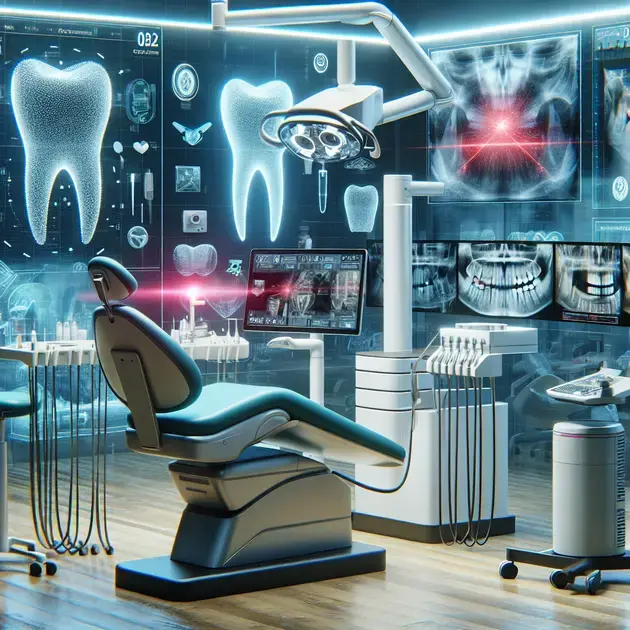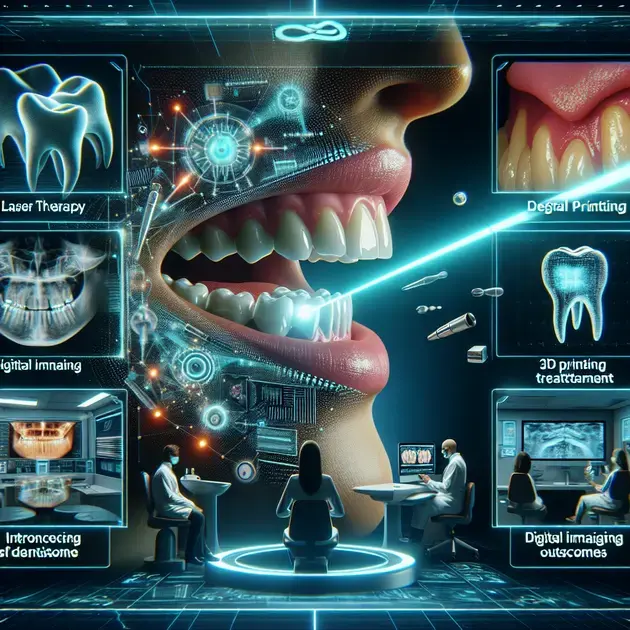When it comes to treating periodontitis, understanding medication options is crucial for effectively managing this condition. Periodontitis, a serious gum infection that damages the soft tissue and destroys the bone that supports your teeth, requires a comprehensive approach to treatment.
With advances in dental medicine, there are now various medications available to help combat periodontitis and improve oral health. From antibiotics to antimicrobial mouth rinses, these treatment options play a key role in controlling gum disease and preventing further damage.

Understanding How Medication Options Combat Periodontitis
Periodontitis is a serious gum infection that damages the soft tissue and destroys the bone supporting your teeth. One of the key strategies in combating periodontitis is through medication options that are prescribed by your dentist or periodontist. These medications can help control the infection, reduce inflammation, and prevent further damage to your gums and bones.
To understand how medication options combat periodontitis, it is important to follow these steps:
Step 1: Consultation with a Dental Professional
The first step is to schedule an appointment with your dentist or periodontist. They will evaluate the severity of your periodontitis and determine the most appropriate medication for your condition.
Step 2: Prescription of Antibiotics
In some cases, antibiotics may be prescribed to combat the bacteria causing the infection. These antibiotics may be in the form of pills, mouth rinses, or gels that are applied directly to the infected area.
Step 3: Follow Your Dentist’s Instructions
It is crucial to follow your dentist’s instructions carefully when taking medication for periodontitis. Make sure to take the full course of antibiotics as prescribed, even if your symptoms improve before you finish the medication.
Step 4: Regular Dental Check-ups
Regular dental check-ups are essential to monitor your progress and make any necessary adjustments to your medication regimen. Your dentist will also perform professional cleanings to remove plaque and tartar buildup that can worsen periodontitis.
Exploring the Role of Antibiotics in Treating Periodontitis
Antibiotics play a crucial role in treating periodontitis by combating the bacterial infection that causes gum disease. When used in conjunction with other dental treatments, antibiotics can help reduce inflammation, control the progression of the disease, and promote healing of the gums.
To explore the role of antibiotics in treating periodontitis, consider the following:
Step 1: Diagnosis of Periodontitis
Before antibiotics can be prescribed, a proper diagnosis of periodontitis must be made by a dental professional. This may involve a comprehensive dental exam, X-rays, and periodontal probing to assess the extent of the disease.
Step 2: Selection of Antibiotic Therapy
Based on the severity of your periodontitis, your dentist may recommend antibiotic therapy as part of your treatment plan. This may involve oral antibiotics, topical antibiotics, or a combination of both depending on your specific needs.
Step 3: Adherence to Treatment Regimen
It is important to adhere to the prescribed antibiotic regimen and follow your dentist’s instructions carefully. Skipping doses or stopping the medication prematurely can lead to antibiotic resistance and ineffective treatment of periodontitis.
Step 4: Monitoring and Follow-up Care
Your dentist will monitor your progress during follow-up appointments and make any necessary adjustments to your antibiotic therapy. It is essential to attend regular check-ups to ensure that the antibiotics are effectively combating the infection.

Exploring Alternative Therapies for Managing Periodontitis
When it comes to managing periodontitis, exploring alternative therapies can provide additional options for patients seeking relief from this chronic condition. One alternative therapy that has gained attention in recent years is the use of herbal remedies. Certain herbs, such as chamomile and echinacea, have anti-inflammatory properties that may help reduce the symptoms of periodontitis. Incorporating these herbs into oral hygiene routines or as supplements could potentially complement traditional treatments.
Another alternative therapy worth exploring is acupuncture. This ancient Chinese practice involves inserting thin needles into specific points on the body to promote healing and reduce pain. Acupuncture has been found to be effective in managing various types of inflammatory conditions, including periodontitis. By targeting specific meridian points related to oral health, acupuncture may help alleviate inflammation in the gums and promote overall oral well-being.
Additionally, probiotics have emerged as a promising alternative therapy for periodontitis management. Probiotics are live beneficial bacteria that can support oral health by balancing the microbiome in the mouth. By introducing good bacteria into the oral environment, probiotics may help reduce harmful pathogens that contribute to periodontal disease. Incorporating probiotic-rich foods or supplements into one’s diet could potentially enhance traditional periodontitis treatments.
Overall, exploring alternative therapies for managing periodontitis can provide patients with additional tools to support their oral health journey. While traditional treatments such as scaling and root planing remain essential for combating periodontal disease, integrating alternative therapies like herbal remedies, acupuncture, and probiotics may offer a holistic approach to addressing the underlying causes of gum inflammation and supporting long-term oral wellness.
The Role of Lifestyle Changes in Periodontitis Treatment
When it comes to treating periodontitis, lifestyle changes play a crucial role in supporting overall oral health and managing the progression of gum disease. One key lifestyle change that can significantly impact periodontitis is adopting a healthy diet rich in nutrients that support gum health. Foods high in vitamin C, such as citrus fruits and leafy greens, can help boost the immune system and promote tissue healing in the gums.
Regular exercise is another essential lifestyle change that can benefit individuals with periodontitis. Physical activity not only improves circulation, which is vital for gum health, but also helps reduce stress levels that can exacerbate gum inflammation. Engaging in regular exercise routines, such as jogging, yoga, or swimming, can support overall oral health and complement periodontitis treatments.
Furthermore, quitting smoking is a critical lifestyle change for individuals with periodontitis. Smoking is a significant risk factor for gum disease as it weakens the immune system and reduces blood flow to the gums, impairing the body’s ability to fight infections. By quitting smoking and avoiding tobacco products, patients can improve their chances of successful periodontitis treatment and prevent further damage to their oral health.
Incorporating stress-reduction techniques, such as mindfulness meditation or deep breathing exercises, can also play a key role in managing periodontitis. Chronic stress has been linked to increased inflammation in the body, including the gums, and can worsen the symptoms of gum disease. By incorporating stress management strategies into daily routines, individuals with periodontitis can better support their overall well-being and optimize the effectiveness of their treatment plan.
Innovative Technologies for Periodontitis Management
Advancements in technology have opened up new possibilities for managing periodontitis more effectively and efficiently. One innovative technology that shows promise in periodontal treatment is laser therapy. Laser technology can target and eliminate bacteria in deep periodontal pockets without the need for invasive surgery, promoting faster healing and reduced discomfort for patients.
Another groundbreaking technology in periodontitis management is 3D printing. By utilizing 3D printing technology, dental professionals can create customized periodontal treatments, such as dental implants or surgical guides, with unparalleled precision and fit. This personalized approach to treatment not only enhances patient outcomes but also streamlines the treatment process for improved efficiency.
Digital imaging technologies, such as cone beam computed tomography (CBCT), have revolutionized the way periodontitis is diagnosed and treated. CBCT allows for detailed 3D imaging of the oral and maxillofacial structures, enabling clinicians to accurately assess periodontal conditions, plan targeted treatments, and monitor treatment outcomes with greater precision.
Furthermore, the advent of telemedicine and remote monitoring technologies has made periodontal care more accessible to patients, especially those in remote or underserved areas. Through virtual consultations and remote treatment monitoring, patients can receive timely advice and intervention from periodontal specialists, improving the overall management of their gum health.
Conclusion
Exploring alternative therapies like herbal remedies, acupuncture, and probiotics offers patients additional tools in managing periodontitis. These therapies, with their anti-inflammatory properties and beneficial bacteria, can complement traditional treatments and address the root causes of gum inflammation.
Lifestyle changes, including a nutrient-rich diet, regular exercise, smoking cessation, and stress-reduction techniques, play a crucial role in supporting overall oral health and managing gum disease progression. By adopting these changes, individuals with periodontitis can enhance the effectiveness of their treatment plan and prevent further damage to their oral health.
Innovative technologies such as laser therapy, 3D printing for personalized treatments, and digital imaging technologies have revolutionized periodontitis management. These advancements not only provide more efficient treatment options but also make periodontal care more accessible through telemedicine and remote monitoring, improving the overall management of gum health.



